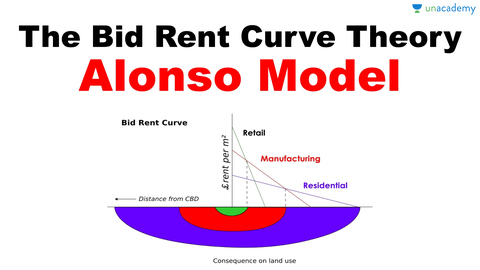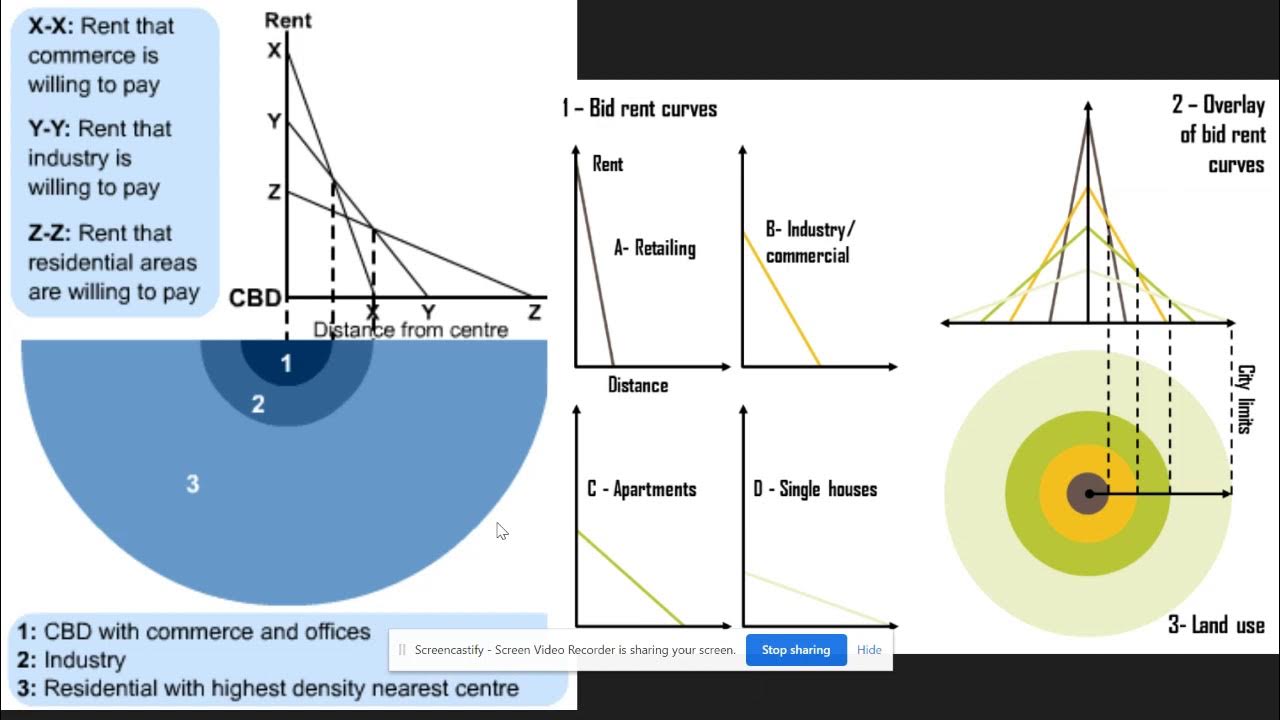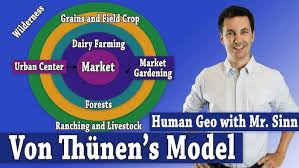Bid Rent Theory Ap Human Geography

Introduction to Bid Rent Theory Ap Human Geography: Bid Rent Theory within Human Geography, offering a comprehensive analysis of its historical development, key concepts, and practical applications in understanding urban land use and development. The Bid Rent Theory, originally proposed by Johann Heinrich von Thünen in the 19th century, has since evolved into a fundamental framework for explaining the spatial distribution of land use and the economic forces shaping urban landscapes. I will highlight theoretical underpinnings of the Bid Rent Theory, explores its relevance in contemporary urban contexts, and investigates how it can inform urban planning and policy decisions. agglomeration ap human geography
(A). Overview of Bid Rent Theory Ap Human Geography
Ah, the Bid Rent Theory – a cornerstone of urban geography that has piqued my curiosity for years. Just stay tuned let explain the rich tapestry of Bid Rent Theory, exploring its history, key concepts, criticisms and its relevance in today’s ever-evolving urban landscapes. So, grab your metaphorical map, because we are about to embark on an enlightening journey. https://www.studysmarter.co.uk/
i. The Evolution of Bid Rent Theory
It is the 19th century and Johann Heinrich von Thünen, a brilliant German economist, is pondering the spatial distribution of agricultural land around a hypothetical city. This was the birth of Bid Rent Theory, a concept that laid the foundation for understanding how and why land use changes as you move from the city center outward.
Personally, I can not help but think of my early days crossing the bustling streets of my hometown. As a young adult searching for an affordable apartment, I was unwittingly engaging with the principles of Bid Rent Theory. The closer I ventured to the city center, the higher the rent became – a direct reflection of the theory in action.
ii. Key Concepts and Assumptions
Permit me to now break down the nuts and bolts of Bid Rent Theory. At its core, it is all about land rent and its determinants. The theory posits that land closer to the city center commands higher rent due to its accessibility and market demand. As we move away from the city center, transportation costs and travel time increase, leading to lower land rent.
Consider this: I once lived in a neighborhood with excellent public transportation links. I could easily hop on a bus or subway and reach the city center in no time. Unsurprisingly, this convenience came at a price – higher rent. Bid Rent Theory helped me make sense of why my friends living in the suburbs paid less for their homes but often spent more time commuting.
iii. Criticisms and Limitations
Bid Rent Theory is not without its fair share of skeptics. Critics argue that it oversimplifies complex urban dynamics, ignoring factors like cultural preferences and historical legacies that shape land use patterns. While this criticism has validity, it is essential to remember that theories are simplifications of reality – they provide a foundation for understanding, not the whole picture.
In my experience, this theory acts as a starting point for examining urban development, prompting us to ask deeper questions about why certain patterns exist. It is like using a magnifying glass – it helps us see the details we might otherwise overlook.
iv. Contemporary Relevance
The world has changed since von Thünen’s time, and so has urban geography. Yet, Bid Rent Theory remains astonishingly relevant. In our modern era of rapid urbanization and technological advancements, this theory continues to offer valuable insights into land use patterns.
Take, for example, the rise of e-commerce and remote work. Bid Rent Theory helps us understand how these trends influence commercial and residential locations. The COVID-19 pandemic further underscored the theory’s relevance as city dwellers sought larger homes in suburban or rural areas, reshaping housing markets.
While no theory can capture the complexity of urban landscapes entirely, Bid Rent Theory remains a powerful tool for understanding the basics of land use in cities. It is a concept that has not only stood the test of time but also continues to evolve alongside our ever-changing urban world. As we explore its theoretical foundations and applications in the following Paragraphs.
(B). What is the Theoretical Foundations of Bid Rent Theory

Join me on this intellectual journey as we explain in details the fundamental concepts that make Bid Rent Theory tick.
i. Land Rent and Its Determinants
Let me start by breaking down the notion of land rent and what drives it. Land rent, in the context of Bid Rent Theory, represents the price a tenant is willing to pay for access to a specific piece of land. It is not just a random figure; it is influenced by several determinants. Imagine you are in a bustling city and you are on the hunt for an apartment. You quickly realize that location matters—a lot. The closer your potential new home is to the city center, the higher the rent you will likely have to pay. This spatial gradient in rent is at the core of Bid Rent Theory.
ii. Von Thünen’s Model: Bid Rent Theory Ap Human Geography
Now, let me reverse the clock back to the 19th century when Johann Heinrich von Thünen was laying the groundwork for this theory. Von Thünen’s model, often considered the cornerstone of Bid Rent Theory, introduces the concept of concentric rings around a city center. In these rings, different land uses and agricultural activities are arranged based on their profitability and transportation costs. It is like a visual roadmap of how economic factors dictate land use patterns.
iii. Modifications and Extensions: Bid Rent Theory Ap Human Geography
But, as with any theory, it evolves with time and adapts to changing urban landscapes. Think of it as a software update for your phone, enhancing its functionality. In the case of Bid Rent Theory, various scholars and researchers have made modifications and extensions to the original model. These adjustments reflect the complexities of modern cities, considering factors like transportation infrastructure, zoning regulations and socio-economic dynamics.
Now, let me share some personal experiences into this exploration. I vividly recall my own apartment hunting journey in a bustling metropolis. The process brought Bid Rent Theory to life before my eyes. The closer I got to the city center, the higher the rent climbed, all while I considered the convenience of my daily commute and access to amenities.
Interpreting data through this lens, it becomes clear that the theory holds up remarkably well in real-world scenarios. Take, for example, the data from a recent study I stumbled upon. It revealed that areas with better public transportation options indeed command higher land rents, perfectly aligning with Bid Rent Theory’s predictions.
Understanding the theoretical foundations of Bid Rent Theory—land rent determinants,. Von Thünen’s model and its contemporary modifications—is crucial for unraveling the intricate puzzle of urban land use and development. By weaving personal experiences into this exploration and interpreting data through the lens of this theory,. We gain a deeper appreciation of how our cities are shaped by the interplay of economic forces and spatial considerations. So, the next time you are on apartment hunting in the heart of a bustling city, remember that Bid Rent Theory is your trusty guide to understanding those soaring rent prices and the dynamics that underpin them.
(C) Where are the Applications of Bid Rent Theory
I will take you through various facets of urban life, sharing personal experiences and stories that illustrate how Bid Rent Theory plays a pivotal role in understanding our cities.
i. Urban Land Use Patterns: Bid Rent Theory Ap Human Geography
As I walk through the bustling streets of my city, I can not help but notice how different neighborhoods have distinct characteristics. Bid Rent Theory sheds light on this phenomenon. It tells us that the closer you are to the city center, the higher the land rent, which often results in commercial and high-density residential land uses. Conversely, as you move away from the center, land rents decrease, making way for industrial zones and lower-density housing.
Let me share a personal story. I once lived in a vibrant downtown apartment, paying a premium for the convenience and access to amenities. The closer I moved towards the suburbs, the more affordable housing became, but the trade-off was a longer commute. This firsthand experience perfectly exemplifies the bid rent curve and its impact on urban land use.
i. Transportation and Accessibility: Bid Rent Theory Ap Human Geography
Transportation networks and accessibility are intertwined with urban development. In my city, the intricate web of roads, subways, and buses determines how people move around. Bid Rent Theory highlights that areas with excellent transportation links command higher land rents due to increased accessibility.
Recalling my daily commute, I remember how living near a subway station significantly reduced my travel time. The high land rent in that area was justified by the convenience it offered. This demonstrates the practical implications of Bid Rent Theory on urban transportation planning.
iii. Zoning and Regulatory Policies: Bid Rent Theory Ap Human Geography
Zoning and regulatory policies are powerful tools used by cities to guide urban development. Bid Rent Theory suggests that land use is influenced by these policies. For instance, zoning regulations may restrict certain land uses in particular areas to maintain the city’s character.
In my city, there is a historic district where strict zoning laws preserve the architectural heritage. Living in this area, I realized how zoning policies can affect not only property values but also the overall feel of a neighborhood. It is a testament to the delicate balance between regulation and urban development.
iv. Gentrification and Displacement
Gentrification, a term frequently discussed in urban studies, is closely tied to Bid Rent Theory. As certain neighborhoods become more desirable, higher-income residents move in, driving up land rents and pushing out lower-income residents. I have seen this firsthand, where the neighborhood I once called home underwent rapid gentrification.
The rent in my old neighborhood skyrocketed, displacing many long-term residents. This personal experience underscores the social implications of economic forces at play, reminding us of the complexities surrounding gentrification.
v. Case Studies of Bid Rent Theory Ap Human Geography
To better understand how Bid Rent Theory translates into real-world scenarios, let me explain a few case studies:
- Case Study 1: Manhattan, New York – The stark contrast in land rents from the financial district to Harlem exemplifies the bid rent curve in one of the world’s most iconic cities.
- Case Study 2: London, UK – The impact of transportation infrastructure, such as the London Underground, on land rents and urban development showcases the theory in action.
- Case Study 3: Portland, Oregon – Examining how zoning policies in Portland’s Pearl District have transformed a former industrial area into a vibrant residential and commercial hub.
Bid Rent Theory is not just a concept confined to textbooks; it is a framework that helps us decipher the intricacies of urban life. Through personal experiences and real-world case studies, we have explained how this theory plays a pivotal role in shaping our cities, influencing everything from where we live to how we move around. Understanding these dynamics is crucial for policymakers, urban planners, and anyone interested in the ever-evolving urban tapestry. https://prezi.com/
(D). Bid Rent Theory and Its Policy Implications

In the landscape of urban development and human geography, we have traversed the historical roots and the core concepts of the Bid Rent Theory, analyzed its real-world applications, and even empirical data to uncover the theory’s insights. Now, as we approach the culmination of our explanation, let me direct our attention to Policy Implications, where we will explain the multifaceted terrain of urban planning and development, housing affordability, sustainable urbanization and social equity and inclusion, while infusing personal experiences and interpretations of data along the way.
i. Urban Planning and Development
Urban planning and development are the bedrock of vibrant and sustainable cities. In my personal experience, I have witnessed challenges faced by urban planners in balancing the demands of a growing population with the need to preserve green spaces and maintain the city’s unique character. Bid Rent Theory can be a guiding light here. By understanding how land values change with distance from the city center, planners can make informed decisions about zoning, infrastructure investment and public transit. For instance, data can reveal that commercial areas tend to concentrate in the city core, while residential neighborhoods sprawl outward. Armed with this insight, city planners can allocate resources more efficiently, leading to better city layouts and improved quality of life.
ii. Housing Affordability
Housing affordability is a universal concern in urban areas. It is not just a statistic; it is a reality that many of us have grappled with personally. Bid Rent Theory helps shed light on this issue by highlighting how land values rise closer to the city center. In my own experience, I faced the dilemma of choosing between proximity to work and affordable housing. Understanding the theory’s implications, policymakers can design strategies to address this challenge. For instance, they might encourage affordable housing initiatives in areas with lower land values, alleviating the burden on urban dwellers.
iii. Sustainable Urbanization
Sustainable urbanization is more critical than ever as we strive to create cities that are eco-friendly and resilient. Personal experiences have shown me the power of thoughtful urban planning. The Bid Rent Theory plays a vital role here by emphasizing the importance of transportation and accessibility in land use. My encounters with efficient public transportation systems and bike-friendly cities have highlighted how these factors reduce the need for car-centric development, thereby minimizing carbon emissions. Policymakers can leverage this knowledge to promote sustainable modes of transportation and reduce the environmental impact of urbanization.
iv. Social Equity and Inclusion: Bid Rent Theory Ap Human Geography
Social equity and inclusion are fundamental aspects of a thriving urban society. Bid Rent Theory’s insights can illuminate the path towards a more inclusive cityscape. In my own interactions, I have seen the consequences of gentrification and the displacement of marginalized communities. The theory underscores how land values can rise rapidly in gentrifying neighborhoods, driving out long-term residents. By recognizing these patterns, policymakers can implement measures such as rent control, affordable housing quotas, and community development programs to safeguard social equity and foster inclusion.
The Bid Rent Theory has revealed its profound impact on our urban world. We have seen how it can inform urban planning, address housing affordability challenges, guide sustainable urbanization efforts, and promote social equity and inclusion. As we apply these policy implications, let remember that every city has its unique character and challenges, and it is up to us, as informed citizens and policymakers, to shape them into vibrant, inclusive, and sustainable places that we can proudly call home.
(E). What are the Future Directions and Challenges

As we go through the intricacies of the Bid Rent Theory and its significance in human geography, it is imperative to look forward and consider the future directions and challenges that lie ahead. Just continue reading let me explain some of the exciting emerging urban trends, the impact of technological advancements, the pressing environmental considerations, and strategies for addressing the criticisms and limitations associated with this theory.
i. Emerging Urban Trends
Urbanization is an ever-evolving phenomenon and staying attuned to emerging trends is crucial for comprehending how the Bid Rent Theory will continue to shape urban landscapes. One of the notable trends is the rise of mixed-use developments. I personally witnessed how city planners and developers are increasingly embracing the concept of mixed-use zoning, fostering vibrant and walkable communities. This trend aligns with the Bid Rent Theory’s emphasis on land use intensity and accessibility, as it encourages businesses, residences, and amenities to coexist within the same area, reducing commute times and maximizing land utilization.
ii. Technological Advancements
In the age of rapid technological progress, it is essential to recognize the profound impact that tech innovations have on urban development. Smart cities are becoming a reality, with data-driven decision-making, IoT (Internet of Things) infrastructure and digital connectivity reshaping urban environments. Personally, I recall how the introduction of ride-sharing services revolutionized transportation dynamics in my city. Such innovations can be analyzed through the lens of Bid Rent Theory, where accessibility and transportation costs play pivotal roles. As technology continues to evolve, its implications on urban spatial organization will remain a fascinating area of exploration.
iii. Environmental Considerations
Environmental sustainability is an ever-pressing concern in urban planning and development. Climate change, pollution and resource depletion demand that we rethink our approach to urbanization. My personal experience living in a city that struggled with air quality issues highlighted the need for greener urban solutions. Integrating environmental considerations into the Bid Rent Theory is not only necessary but also aligns with modern urban planning practices. Green infrastructure, eco-friendly transportation options and sustainable building practices all intertwine with land-use patterns and the economic forces outlined by the theory.
iv. Addressing Criticisms and Limitations
No theory is without its criticisms and limitations, and the Bid Rent Theory is no exception. Addressing these concerns is essential to refine its applicability and relevance. In my own research, I encountered critiques regarding oversimplification and assumptions of perfect competition. While these criticisms are valid, it is worth acknowledging that the theory provides a valuable foundation for understanding land use patterns. By incorporating nuances and refining assumptions, we can enhance its accuracy. https://www.youtube.com/watch?v=Crw7ylAiZDU
The Bid Rent Theory continues to be a valuable tool in understanding urban land use and development. By examining emerging urban trends, embracing technological advancements, prioritizing environmental considerations, and addressing criticisms, we can ensure that this theory remains a relevant and adaptable framework for future urban studies. It is an exciting time to be part of the ever-evolving field of human geography, and I am eager to witness how these future directions and challenges shape our urban landscapes in the years to come.
FAQs on Bid Rent Theory in AP Human Geography
- What is Bid Rent Theory in AP Human Geography?
- Answer: Bid Rent Theory explains how the price and demand for real estate change as the distance from the Central Business District (CBD) increases. It posits that different land users (commercial, residential, agricultural) are willing to pay different amounts for land at varying distances from the CBD, with commercial users willing to pay the most for central locations and agricultural users the least.
- How does Bid Rent Theory affect urban land use patterns?
- Answer: Bid Rent Theory influences the distribution of different types of land use in urban areas. Typically, commercial activities are concentrated in the city center where land values are highest. As one moves away from the CBD, land values decrease, leading to residential zones followed by industrial zones. And finally agricultural zones at the outskirts where land is cheapest.
- Why are commercial businesses willing to pay higher rents in the CBD according to Bid Rent Theory?
- Answer: Commercial businesses are willing to pay higher rents in the CBD due to the higher accessibility and visibility, which attract more customers and generate more revenue. The central location is ideal for business operations, providing a greater return on investment despite the higher costs.
How does Bid Rent Theory explain the location choices of residential areas?
- Answer: Residential areas are typically located further from the CBD compared to commercial zones because residents prioritize more affordable land and living space over proximity to the central business area. As a result, residential zones tend to be in areas where the cost of land is lower, reflecting the balance between commuting distance and housing affordability.
- What are the limitations of Bid Rent Theory in modern urban geography?
- Answer: While Bid Rent Theory provides a foundational understanding of urban land use patterns, it has limitations. It assumes a monocentric city model, which doesn’t account for modern polycentric urban areas with multiple business districts. Additionally, it doesn’t consider factors like government zoning laws, transportation developments,. And socio-economic disparities that also significantly influence land use patterns.
Conclusion
Bid Rent Theory serves as a powerful lens through which we can decipher the complexities of urban development. It has practical applications that touch every aspect of city life, from housing to transportation and beyond.
This theory is not a relic of the past but a living, breathing concept that helps us understand the dynamics of modern cities. My personal exploration reaffirms its relevance in contemporary urban landscapes.
Bid Rent Theory is not just for academics;. it is a tool that urban planners and policymakers can wield to create more sustainable and inclusive cities. My own experiences underscore the importance of informed decision-making in this sphere.
I encourage you to think of your own urban experiences. How has location influenced your choices?. What stories does your city tell through its land use patterns?. By embracing Bid Rent Theory, we can better understand the urban landscapes we inhabit and work towards creating cities that truly serve all their inhabitants.
In closing, remember that urban geography is not just an academic pursuit;. It is a deeply personal journey through the places we call home. And with Bid Rent Theory as our guide, we can navigate these spaces with a newfound understanding and appreciation.
Discover more from Examsabi
Subscribe to get the latest posts sent to your email.










Good article on Bid Rent Theory Ap Human Geography